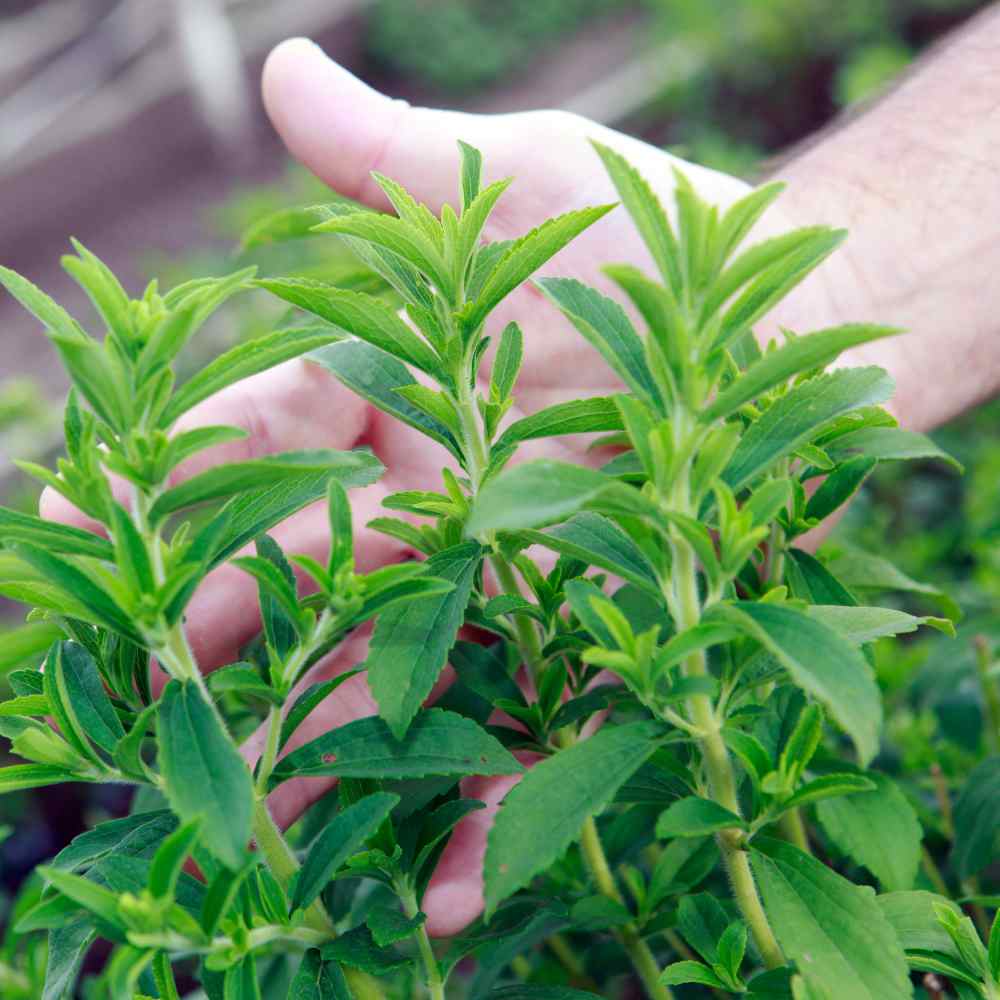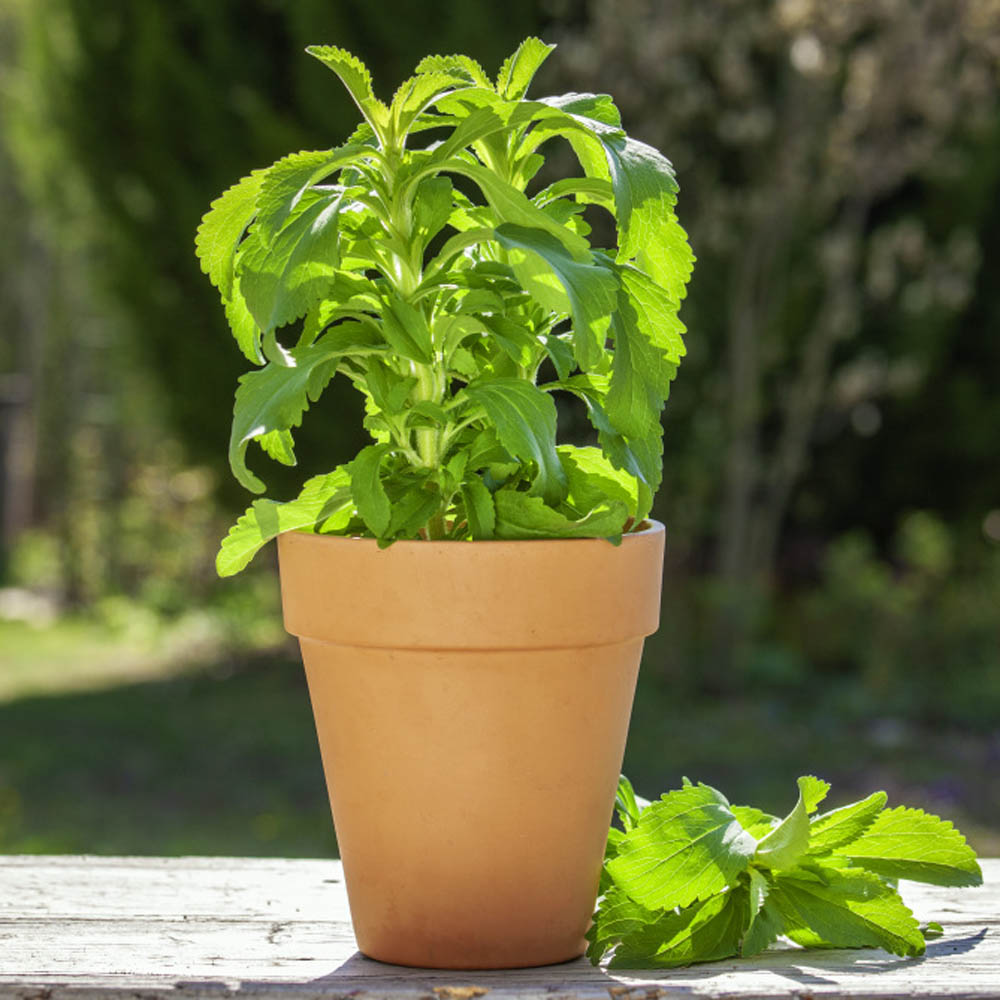-
CATEGORY ::
- All Seeds /
- All Herb Seeds /
- All Stevia Seeds





Stevia Seeds - Sweetie Star
About...
Stevia Sweetie Star (Stevia Rebaudiana) - The leaves are 30 - 40 times sweeter than sugar cane, but with no calories or carbohydrates. The Stevia leaves can be applied directly into drinks or made into tea. The dried leaves can also be ground into powder and used in recipes that call for green Stevia powder. As far as we know this is the sweetest Stevia herb on the market, and it's grown from Stevia seeds.MORE STEVIA OPTIONS
Herb Specifications
SEASON
Perennial
USDA ZONES
9 - 10
HEIGHT
12 inches
BLOOM SEASON
Can bloom year round
BLOOM COLOR
White
ENVIRONMENT
Partial shade
SOIL TYPE
Moist, well-drained, pH 6.1 to 6.5
DEER RESISTANT
No
Planting Directions
TEMPERATURE
68 - 75F
AVERAGE GERM TIME
7 - 14 days
LIGHT REQUIRED
Yes
DEPTH
Press seed onto surface of soil, cover lightly with peat moss
SOWING RATE
2 - 3 seeds per plant
MOISTURE
Keep moist until germination
PLANT SPACING
12 inches
Popular Herb
Stevia is popularly known for its use as a zero calorie natural sweetener. Growing this herb can give you your own supply of the super-sweet leaves!

Super Sweet Herb
How To Grow
Stevia seeds are best started indoors 6-8 weeks before the last expected frost date. Plant seeds in a starter mix and press into the soil, then lightly cover with peat moss. Keep seeds moist until germination. To encourage a bushier growth, pinch back the tips of the plant 2 - 3 times before transplanting outdoors. Transplant outdoors into a prepared bed after danger of frost has passed. If possible, give the plants some protection from wind. Consistent moisture is important during the summer. Stevia plants can be wintered indoors if given adequate light.
- Environment: partial shade
- Sowing rate: 2-3 seeds per plant
- Soil: well-drained wit pH 6.1-6.5

Plant Information
Stevia sweetie star is a perennial herb that grows in USDA zones 9 through 10. The leaves are especially useful as sweetening agents, and should be harvested just before the blooms appear in order to yield the sweetest product.
- Bloom color: white
- Herbal use: sweetener
- Bloom season: potentially year-round
Stevia Sweetie Star (Stevia Rebaudiana) - Stevia is a well-known culinary herb that is used as a sweetener. The leaves are 30 - 40 times sweeter than sugar cane, but with no calories or carbohydrates. The Stevia leaves can be applied directly into drinks or made into tea. The dried leaves can also be ground into powder and used in recipes that call for green Stevia powder. As far as we know, this is the sweetest Stevia herb on the market, and it's grown from Stevia seeds.
Stevia is a rewarding plant to grow in the herb garden! It is a tender perennial that is native to subtropical regions. Wild Stevia herb plants often grow on the edges of marches or streams. Stevia can be successfully grown in the herb garden in most any region. It prefers a well-drained sandy loam. Raised beds ensure that the roots do not have too much moisture, and organic compost and regular watering give adequate moisture and nutrients. In colder, northern climates, grow Stevia herb plants as annuals.
How To Grow Stevia From Herb Seeds: Start the Stevia seeds indoors 6 - 8 weeks before the last expected frost date. Use a starter mix and gently press the herb seeds into the soil. Lightly cover the Stevia herb seeds with peat moss. Keep Stevia seeds consistently moist by watering from the bottom of the container. A plastic dome or plastic wrap over the tray or containers is helpful in keeping the moisture in. To encourage a bushier growth, pinch back the tips of the plant 2 - 3 times before transplanting outdoors. Transplant outdoors into a prepared bed after danger of frost has passed. If possible, give the Stevia plants some protection from wind. Consistent moisture is important during the summer. Stevia plants can be wintered indoors if given adequate light. A sunny, south facing window or a fluorescent light is needed.
Harvest the Stevia leaves when the flavor is the highest which is before flowering or as soon as the blossoms appear. Stems can be cut in the morning after dew has dried, bunched together and hung upside down in a well-ventilated place. Stevia leaves are crisp and bright green when they are fully dry.



























